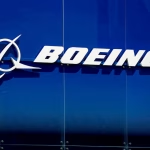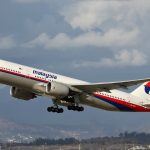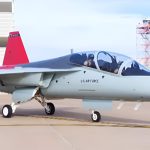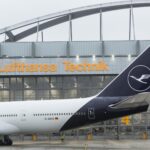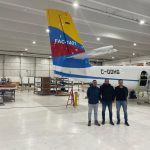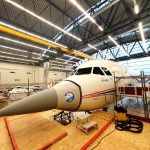The sanctions imposed on Russia as a result of the invasion of Ukraine have not hindered the maintenance of the PowerJet SaM-146 engines of the Sukhoi Superjet 100 aircraft, according to Kommersant.
According to the Russian newspaper, the maintenance, repair and overhaul of the powerplant have not been affected by the increased flight hours of the aircraft and the lack of participation from Safran, the French company that developed the engine in collaboration with the Russian manufacturer NPO Saturn.
See also: Rostec would maintain engines with Western components for the Sukhoi Superjet 100 until 2030
The current situation of the Sukhoi Superjet 100 engines
The United Engine Corporation (UEC) claims that 32 of the 314 engines belonging to the currently operational Sukhoi Superjet 100s are in need of repair.
According to Kommersant, the state-owned company responsible for aircraft engine production is not yet able to carry out all the necessary maintenance work, although it assures that it will be able to deal with the situation.
Sources from the airlines cited by Kommersant doubt the feasibility of the plans and do not rule out the possibility that a large portion of the Sukhoi Superjet 100 fleet will become inoperable in the coming months.
A new version with Russian components
On November 24 2022, the aerodynamic tests of the Sukhoi Superjet 100, composed entirely of Russian components and known as the SSJ-NEW, were completed. It is a modification of the single-aisle type that first flew in 2008 and represented Russia’s first major commercial aviation venture of this century. Its development was the result of cooperation with around thirty international suppliers.
However, the current situation is far from that time. The sanctions imposed by the European Union, the United Kingdom, the United States and Canada, which restrict Russia’s ability to import aircraft and parts from the West, added pressure to the aerospace production after the military invasion of Ukraine in February 2022.
In this context, the national administration began implementing a series of measures to promote the local industry and emphasized the need to minimize dependence on foreign inputs. Reducing the importation of components and encouraging the domestic activity of national manufacturers is crucial to their intentions.
As part of the development process of the new Sukhoi Superjet 100, authorities are seeking to certify the new domestically manufactured PD-8 engine in September of this year. Although initially the certification was expected to be completed in 2024, the situation in the Russian industry has prompted an acceleration of the timeline.
The first aircraft equipped with the new powerplant are expected to start regular operations by the end of this year, according to Oleg Bocharov, Deputy Minister of Industry and Trade.
See also: Russia brings forward certification of the new Sukhoi Superjet 100 engine




